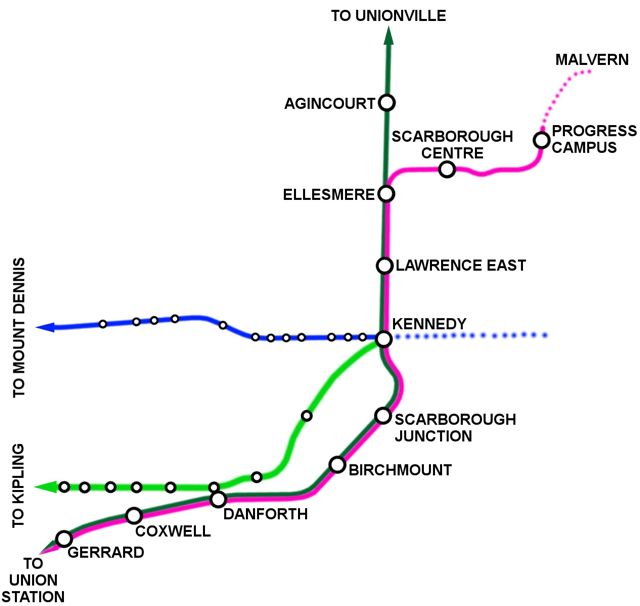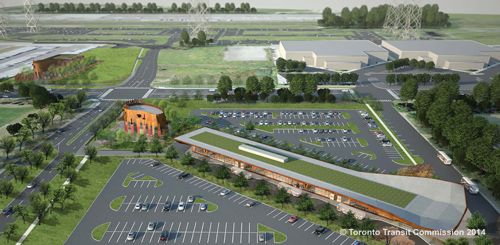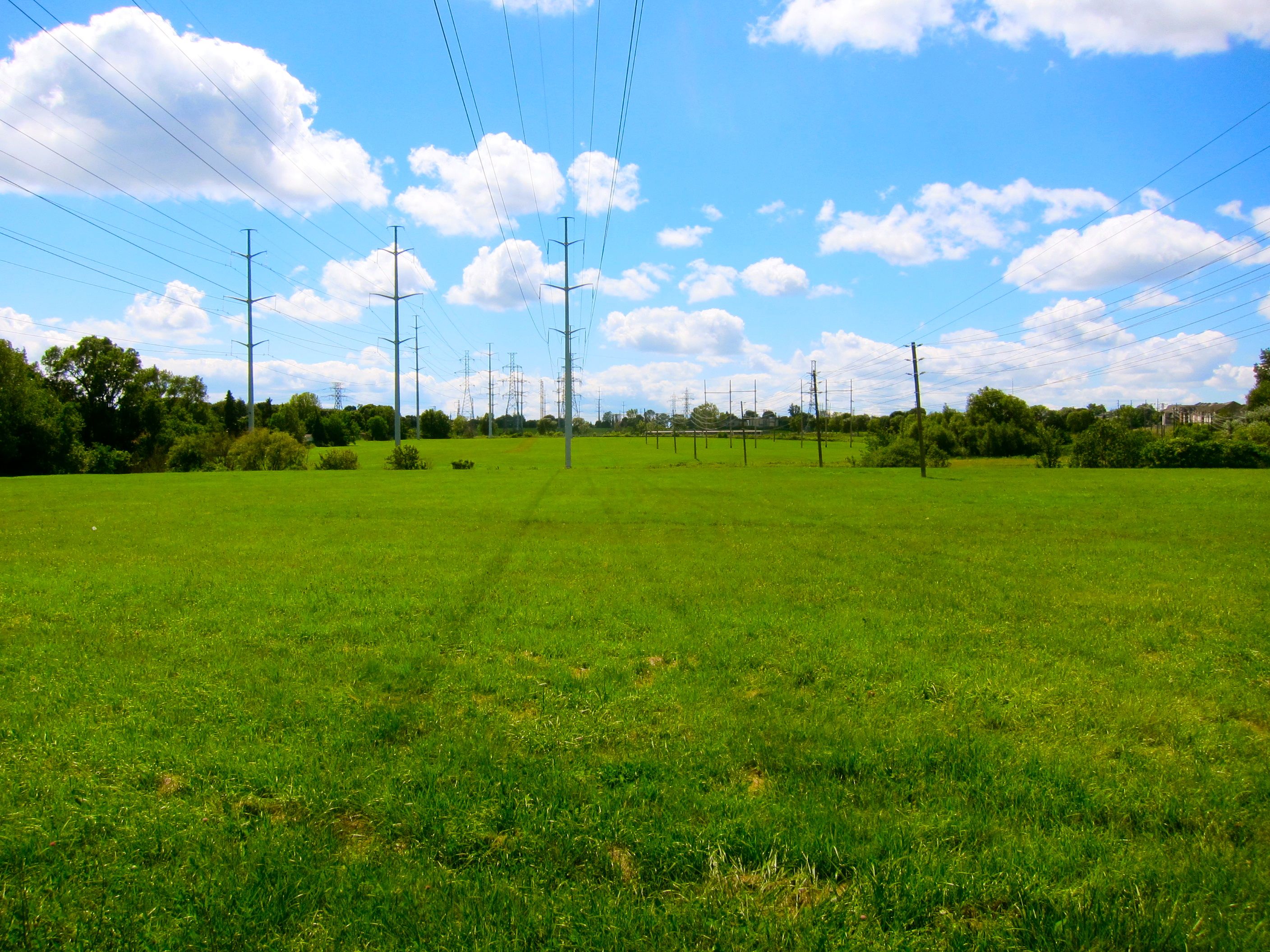FEEDBACK PROVIDED IN 2013 FOR:
– Toronto Planning’s “Feeling Congested” initiative (or why I circled only four of the 14 suggested funding tools instead of the requested five)
– Metrolinx’s Big Move funding options
ABOUT ME: Journalist and urbanist who worked nearly 40 years at four Toronto newspapers, mostly as an editor. I’ve written many times on transit matters and have frequently interviewed local and international transit officials and academics. I’ve followed local transit and development issues seriously since the 1960s and have recently been a commercial real estate reporter. I provided detailed (and, as it turns out, somewhat prescient) feedback on the Official Plan nearly a decade ago. I also provided a detailed critique of the Metrolinx’s Green and White papers, which appears to have been ignored.
Dear Feedback reviewers:
I’ve little to add regarding most of the Metrolinx and City consultation processes. Property tax increases and regional parking, gas and sales taxes will be needed for much of the revenue-gathering process. I’m eager to pay my share. But I have a few key concerns, mostly about our apparent unwillingness to even start looking seriously at the full economic potential of linking transit and land use through real world real estate leverage. Get that stuff right, and you’ll have a much easier time persuading the public to pay taxes and tolls, and our transit systems’ operations sides will be that much more effective day-in, day-out.
TOLLS AND CONGESTION CHARGES:
It’s nice to see that talk of tolls and congestion charges hasn’t been as divisive and controversial as many had predicted, though that might change once politicians have to debate recommendations. Unfortunately, tolls and/or congestion charges likely won’t be very useful to us until we have enough transit-based alternatives for those living and/or working in largely car-dependent environments, and until we stop adding new sprawl in the region. As it stands, the TTC is overcrowded. Also, as ex-Transport for London vice-chair Dave Wetzel told me in 2006, that city’s congestion zone was much more effective in shaping behaviour than raising funds (He called the actual congestion revenue “a drop in the bucket.”) He also doubted the overall program would have worked without London’s massive rail networks, something we lack.
MENU OF REVENUE TOOLS:
It was also encouraging, at least from media coverage I’ve seen, that there’s fairly broad support for a fairly wide range of revenue tools. We’ve long talked about transit as an investment, but have still tended to act as if it’s an expense. We get hung up on initial outlay costs and don’t seem to pay any real attention to return-on-investment opportunities. Wise investors diversify the portfolio and we’d be wise to diversify the income sources. But the real key to investing is to focus on ROI. In recent decades, we’ve fallen down in this area, and it seems the revenue-tools discussion has ignored the need to nurture self-regenerating income sources.
BEWARE OF UNINTENDED CONSEQUENCES:
Reliance on development charges, “benefit assessment districts” and value-capture levies can be tempting and might seem fair on first thought. Unfortunately, if we’re serious about properly linking land-use and transportation planning (and we’d better be), we have to be wary of disincentives to growth in the station catchment areas. We have a longstanding and serious problem in the GTHA with perverse subsidies that inadvertently encourage the same sprawl that public policymakers are grappling with. So many accepted norms of the past century, including our property tax system, need to be re-examined if we want to direct growth to locations where it’s desired. This process has to focus not only on raising the bucks needed to fund transit expansion, but also on finding ways to give the public the best bang for their bucks. Often that won’t mean simplistic short-term strategies such as merely choosing less-expensive transportation technologies (though LRT will almost certainly turn out to be best tool for many priority applications we’ve identified).
LAND USE, TRANSIT PLANNING AND REAL ESTATE:
Somewhere in a space between the loons and hucksters who tell us we can have subways for free and the extremists who seem eager to silence any discussions about involving private-sector developers in transit capital projects, lies a significant funding tool largely ignored and/or forgotten on this continent.
From what I can see, neither the city nor Metrolinx have given the Rail + Property directed-value-capture model (or Rail + Property value-trade) any thought while compiling their lists of potential tools, though in one-on-one discussions, I get the sense a few senior people in these parts know it’s out there. It may be that in the wake of fantastical recent claims from the Toronto mayor’s office (and problems 20 to 25 years ago involving Canada Square, Penta Stolp and early plans for Mel Lastman’s Sheppard subway), that directed value capture (not to be confused in any way with the value-capture levy mentioned in the city’s “Feeling Congested” documentation) is still seen as potentially more controversial than tolls and congestion charges. The thing is, we’re not just decades behind on building transit infrastructure, we’re way overdue for a discussion of how to fully unlock the potential of real estate development in contributing to the process.
Directed value capture was an essential part of the business model in the Far Past, before the public took over transit operations, back when private operators had a fiduciary duty to approach all spending as proper and necessary investments. Duties to investors and shareholders forced private transit operators to be directly involved in the development of properties along their tramlines, often as amusement parks, main street commercial strips and residential subdivisions. They needed to capture much of the value they created for capital and operating investment returns, and they couldn’t wait passively for the process to start playing itself out.
Directed value capture was also crucial to the success of Japanese railway companies beginning in the 1920s, led by Tokyu and Hankyu. Not only did they create profitable real estate-transit relationships in dense cities, they created many new towns involving rapid transit and all forms of real estate. That latter point is essential to understand because so much of the GTHA is suburban in form, rather than truly urban (and decades after establishment, even our older suburbs are not really urbanizing).
And directed value capture, inspired in large part by the Japanese models, is the heart of Hong Kong MTR Corp.’s Rail + Property business model, which has made both transit-system construction and transit operations profitable since the 1970s, largely because MTR is also a major property developer. MTR was 100% publicly owned until 2000, when it became 23% publicly traded. It’s a strong performer on the Hang Seng Index and is now expanding by exporting its expertise (Melbourne, London and Stockholm). The Rail + Property model is also essential to ambitious current transit expansion plans in Paris.
Yes, we fully realize Hong Kong is far denser than Toronto, and that government entities there have far more leeway to do as they please, and that Hong Kong has a very different property ownership regime – points usually trotted out by North Americans determined to shut down any such conversation and revert to simpler but much-tougher-to-sustain tax-and-toll revenue collection tools. But there are significant lessons we can learn from the MTR experience as well as tools we can adapt for the Ontario-specific context. If we get them right we not only raise significant funds for transit capital projects, but we improve operational efficiencies and provide the working tools for the transit and land-use planners who’ve awakened in recent decades to the mutually-supportive nature of their missions. Even better, if we prove to the electorate that we’re doing a really good job of fully leveraging the worth of our transit entities’ real estate assets, we’ll have a much easier time persuading the citizenry to cough up a bit more with the traditional revenue tools in the current discussion.
How much could a directed value-capture program raise? The only truthful answer within the North American context is, who knows? As Martin Wachs, a long-distinguished California-based planning professor and expert on transit funding puts it: “This form of public-private partnership is not even in the lexicon. I don’t know about Canada, but in the U.S., imitation plays an essential role and until there is a proven example here, few people will take it seriously.” Wachs tells an interesting tale of one attempt to get such a plan rolling for the 1924 L.A. subway plan, but in the wake of the then-recent Russian Revolution, public involvement in land development was shot down as a communist idea. One of Wachs’s former PhD students, Prof. Robert Cervero of UC Berkeley has written extensively on the Far East models, and we should bring him to Toronto to talk about MTR. Robert and I are playing telephone tag right now.
By some measures and accounts, Hong Kong does get its subways for free (though straight construction-outlay costs are similar to ours on a per-kilometre basis) and three extensions are currently approved or under construction (also, unlike Toronto, Hong Kong and London, for that matter, don’t tunnel in low-density areas). In a 2004 discussion with an MTR executive, interviewed for a Globe and Mail story, I was told that in North America, it should be realistic to expect that we at least get our stations for free. The logic was that if we can’t even get that much return on a subway project, we’re putting the stations in the wrong places and/or the funding model is broken. Free stations on the Spadina-York extension, based on capturing and leveraging their development potential, would have saved about $860M, or about 33% of the up-front capital costs, not to mention significantly improving operating revenues from Day 1. Instead, we opted for standalone stations that stifle most of the value they create. But even if 33% is overstating the potential, and that’s likely in the initial stages, when we’d still be experimenting with the adaptations for Toronto (and getting the crucial oversight and moral-hazard puzzles worked out), significant potential exists.
Oversimplified, of course, Rail + Property directed value capture requires that the development goals and real estate potential be fully considered right from the start of the planning process. If we wait to consider station development and then try to collect levies or air rights or increased tax-base benefits that might accrue over time from the catchment area of an operating station, the public collects far less than it should and has to wait a long time to capture the value. Several decades-old TTC stations serve as unpleasant exhibits of what can happen, especially when you expand urban transit tools into suburban areas without a real plan. It’s important to note that Japanese railcos and DC’s WMATA have found that the serious development premium opportunities drop off dramatically after about 100 metres of the turnstiles.
Hugely important for us in considering Toronto-model possibilities, is the MTR view that it’s impossible to fully leverage crucial space potential atop operating stations if planning for significant development wasn’t included right from the conceptual stages of the station project. Tunnels and tracks are always expensive, but stations can be gold mines if you do them properly. And stations can and should have great catalyst effects for entire catchment areas, both financially and in the creation of vibrant urbanism. Essential to the exploitable efficiencies is the sharing of excavation and foundation costs. Next time you walk past a condo or office tower construction site, linger a while to take in the scale of the below-ground work. Then consider this MTR logic, that the marginal costs of adding a station (fully up to standards set and enforced by public sector experts) should be far less than the premiums available to landlords (private or public) whose commercial and residential tenants or condo holders can walk to platforms or other daily primary uses without ever having to go outside. Various land-tenure arrangements should be workable, and some flexibility might be needed, depending on needs of partners and the context of the site over time. MTR isn’t always eliciting presale/prelease interest from developers, but its stations are built to underpin development from the start, and they’ve found that in some parts of the market cycle it’s a good investment to sit on such sites for a few years. It’s a forward-thinking investment strategy that brings great returns to the public, but requires considerable private sector input and expertise.
Part of the reason we can never get anywhere close to matching MTR’s return levels is that we have to factor in land-acquisition costs. However, we have huge swaths of strategically placed, publicly owned land that is significantly underleveraged (not just in the hands of our transportation authorities). At least one stretch of land would holds remarkable potential for a project that should be on the radar for the TTC and Metrolinx (a variation on it was yanked from the Chong report last year, at the last minute, just before it was leaked to the Star). We often talk of selling off public land, but it’s a much better deal for all concerned if we first try to leverage its full potential worth. Selling it off is akin to burning the furniture to heat the family home.
I could go on, but won’t … for now.
A COUPLE OF CLOSING POINTS:
– Something akin to a REIT or real estate investment trust, may be needed to ensure Metrolinx’s land holdings are properly leveraged. Metrolinx faces a tricky balancing act, keeping the stations as connected as possible with current car-dependent suburbs, but shepherding a difficult transition toward transit-friendly urbanism. Obviously, serious thought is going into the process through Mobility Hubs planning for the station catchment zones, and my sources throughout the world of commercial real estate indicate that discussions are active throughout the region. But, Metrolinx has huge untapped outbound morning-rush GO capacity that will be needed soon because we can’t build new GTHA-wide transit capacity fast enough for the impending growth, especially after at least three decades of neglect. We need to make GO stations, whenever possible, into the centres of all-day destinations, places that local transit systems have to serve well, further reducing the need for parking at the stations.
– We have lots of existing public properties within Toronto that have potential but cannot be leveraged well because Build Toronto can only get access to them if the TTC or the city deems them surplus. We have to rethink and tweak this relationship.
Good luck. This mission is crucial to Toronto’s survival.
Steve




